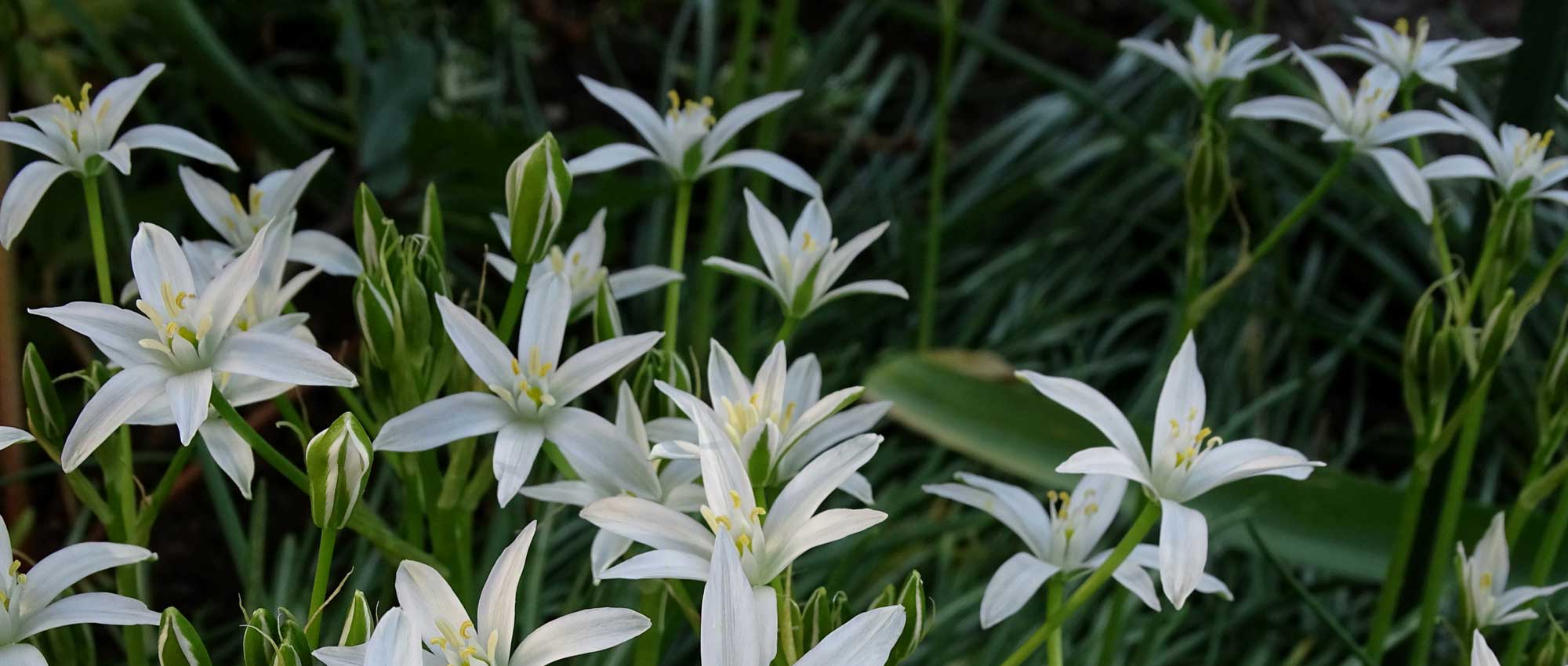
Ornithogalums: planting, growing and care
Contents
Ornithogalum in a nutshell
- Ornithogales are appreciated for their elegant and bright flowering, often white
- They bear star-shaped flowers in spring or summer, gathered in terminal clusters
- They are robust and easy to grow, thriving in well-drained soil, in full sun or partial shade
- These are bulbous plants perfect for a naturalistic or wild-style garden, but they also find their place in a more classic border
- The flowers can be used to create stunning bouquets!
- Some species can naturalise in the garden
A word from our Expert
Star-of-Bethlehem are perennial bulbous plants that flower in spring or summer, usually with white, star-shaped flowers. The umbellate star-of-Bethlehem, Ornithogalum umbellatum, is one of the most well-known, valued for its very delicate flowers that bloom in April-May. Ornithogalum arabicum and thyrsoides also offer elegant white flowering. Some species can be found in different shades, such as yellow or orange (Ornithogalum ‘Namib Sun’, Ornithogalum dubium…). The flowering of star-of-Bethlehem always brings a lot of brightness to borders and is ideal for lightening more vibrant blooms!
Star-of-Bethlehem are robust and easy to grow plants. They require well-drained soil, without standing moisture, as well as good light to allow their flowers to thrive. They may need some watering in spring, during the growth and flowering period. Afterwards, they enter dormancy and are forgotten… only to offer us the same spectacle the following year! They are multiplied by dividing the bulblets produced around the edges of the bulbs.
Botany
Botanical data
- Latin name Ornithogalum sp.
- Family Asparagaceae
- Common name Star of Bethlehem, Wonder flower, Eleven O'Clock Lady, Ornithogalum
- Flowering spring or summer (between March and July, depending on the varieties).
- Height between 10 cm and 1 m
- Exposure sun or partial shade
- Soil type ordinary, draining
- Hardiness very variable
The ornithogales are perennial bulbous plants. Most grow in southern Europe, particularly around the Mediterranean Basin, and in South Africa. They are also found in western Asia and the Caucasus region. The number of species varies greatly among specialists: some count only 30, while others list nearly 200! In France, there are 5 species, including Ornithogalum umbellatum, the most well-known. It grows in fallow land, on uncultivated ground, along paths, and in bright undergrowth.
Ornithogales are geophytes: they spend the harsh season buried in the soil, in the form of a bulb. This is their strategy for surviving the cold, waiting for more favourable conditions.
Their name comes from the Greek ornithos (ορνισ): bird, and gala: milk. This is explained either by the white colour of the flower or to evoke “bird’s milk”, something rare and mysterious, like the flowers of ornithogale! Ornithogalum umbellatum is called “Eleven O’Clock Lady” because its flowers bloom when the sun is high in the sky, usually around 11 o’clock, and close in the evening. They need good light to open! Ornithogales are also known as Star of Bethlehem (due to their star-shaped six-petalled flowers), named after the star that, according to the Bible, announced the birth of Jesus.
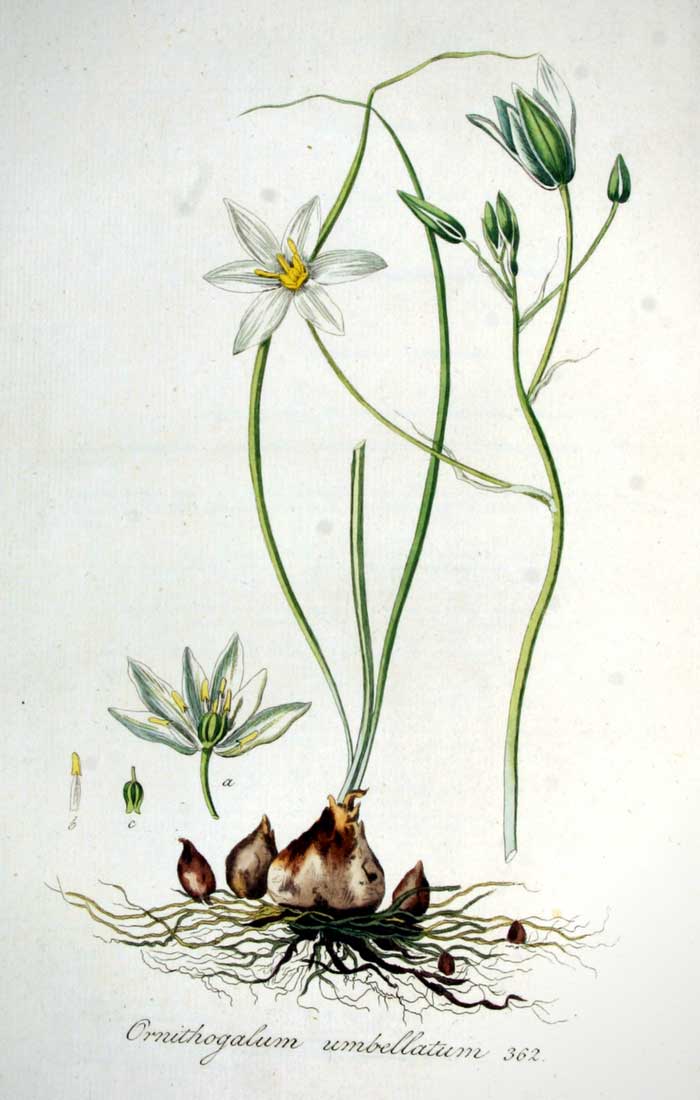
Ornithogalum umbellatum: botanical illustration
Ornithogales belong to the Asparagaceae family, like asparagus… In fact, the Pyrenean ornithogale, whose young shoots are edible, is commonly called Wood Asparagus or Asparagette! Ornithogales were previously classified in the lily family, the Liliaceae.
There are spring ornithogales, often quite hardy. And summer ornithogales, often a bit more tender…! The hardiness of ornithogales is therefore very variable. Ornithogalum umbellatum, growing in the wild in France, is a very hardy plant… This is not the case for species originating from South Africa, such as O. saundersiae, dubium and thyrsoides! Ornithogalum dubium is sometimes grown as a houseplant or on a veranda.
Ornithogales are also closely related to Albuca, bulbous plants from South Africa that can be grown indoors, and which have sometimes been classified among the Ornithogalum.
Ornithogales develop from an underground bulb. They produce linear basal leaves, as well as a thin, upright stem that bears the inflorescences at its tip. They gain height when in flower, but overall, they are not very tall plants. Ornithogalum balansae is among the smallest, not exceeding 10 cm, while the flower stalks of Ornithogalum saundersiae can reach up to 1 m high. This plant has a very vertical appearance, with its very straight, erect, unbranched stems that bear a dense cluster of flowers at their tip.
There are spring ornithogales that bloom in April – May, such as Ornithogalum umbellatum… And others with summer flowering (Ornithogalum thyrsoides, Ornithogalum arabicum…). The ornithogale saundersiae has the particularity of blooming quite early, in late winter. Depending on the varieties, flowering can therefore extend between March and July. Not to mention that it also depends on the cultivation method and the climate in which you grow them!
Ornithogales have star-shaped flowers, which often measure 2 to 3 cm in diameter. The petals can be very thin and elongated, or much rounder, as in Ornithogalum arabicum.
The flowers are gathered in clusters, placed at the end of upright stems, usually bare, without leaves. The inflorescences can take different forms: they are sometimes very fine and elongated. Other times, they are very pyramidal and short, flattened, taking on a corymb shape (all flowers at the same level). In Ornithogalum umbellatum, the flowers are gathered in loose clusters.
While ornithogales generally have flowers directed towards the sky, the ornithogale nutans has flowers placed horizontally or inclined towards the ground, which gives it its common name of Nodding Ornithogale.
The flowers are composed of six tepals (three petals and three sepals, which have the same shape). They also have six stamens (male reproductive organs), quite decorative, often pale yellow, bearing pollen. In Ornithogalum saundersiae and arabicum, at the centre of the flower is placed like a black “pearl”, which contrasts beautifully with the white petals. This is actually the ovary! Most species have a fairly large ovary, but it is usually more discreet, green-yellow in colour.
In most ornithogales, the flowers are white, more or less marked with green. There is often a longitudinal green stripe on the underside of the tepals. In Ornithogalum umbellatum, the petals are white, the stamens yellow, and the ovary is green. The Ornithogalum nutans offers a stunning silvery flowering, while it is yellow in the variety ‘Namib Sun’. As for Ornithogalum dubium, the doubtful ornithogale, it is distinguished by its bright orange flowering!
Feel free to cut ornithogale flowers to make bouquets! They are sometimes used by florists and have a good vase life, lasting up to 2 or 3 weeks, depending on the varieties.
Some species, such as Ornithogalum arabicum, offer fragrant flowers.

The flowering of Ornithogalum arabicum (photo Tatters), Ornithogalum ‘Namib Sun’ (photo J.M. van Berkel) and Ornithogalum nutans (photo Rudi S.)
In ornithogales, the leaves are basal, emerging directly from the bulb, arranged more or less in a rosette. They are long and linear, almost thread-like, somewhat resembling grass leaves, and measure between 10 and 60 cm long. The foliage of ornithogale is quite discreet and does not have much decorative interest. The leaves are flexible and more or less trailing. Those of Ornithogalum umbellatum tend to lie down, spreading on the ground.
In some species, the leaf bears a lighter central vein, creating a longitudinal white line on the upper side of the lamina.
Although ornithogales often have thread-like leaves, some species have much broader foliage. This is the case, for example, with Ornithogalum dubium and arabicum.
The leaves of ornithogales are deciduous. After flowering, they turn yellow, dry out, and eventually disappear, as the plant enters dormancy. They will reappear in spring. But in the meantime, it is best to mark the location of the bulb!
Ornithogales have small ovoid or rounded bulbs. These are storage organs, allowing the plant to survive the harsh season underground, waiting for more favourable conditions. The bulbs produce bulbil, which can easily be separated from the main bulb to multiply the plant!
Ornithogalum caudatum has the particularity of having a huge bulb above the ground, like a caudex (swelling at the base of the trunk in succulent plants).
When the flowers have been fertilised, if you have not cut them, ornithogales will produce capsules, usually with six prominent ribs, containing black seeds. Ornithogalum umbellatum and Ornithogalum nutans tend to self-seed spontaneously and can naturalise in the garden!
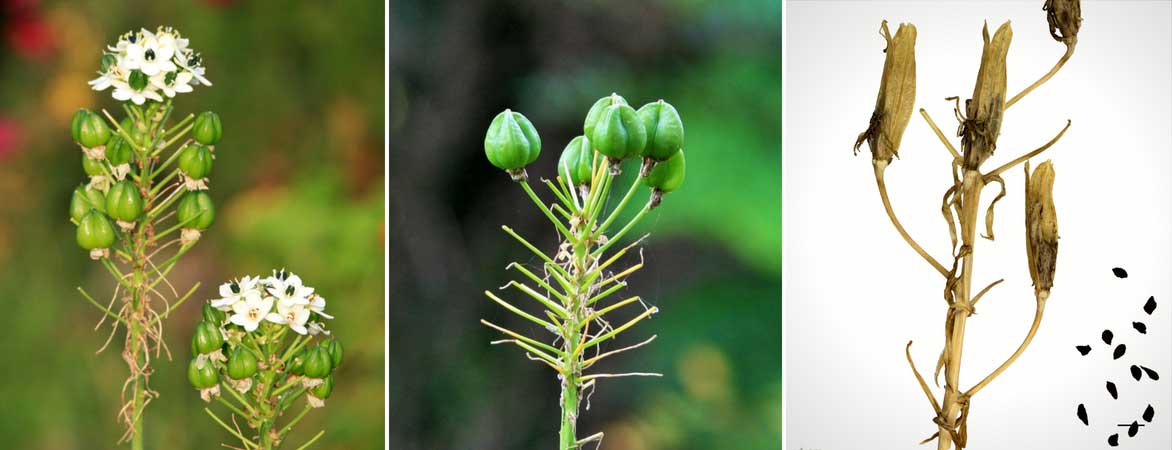
The flowers and capsules of Ornithogalum arabicum / capsules of O. arabicum / The dried capsules and seeds of Ornithogalum candidans (photo Roger Culos – Museum de Toulouse)
Read also
Erythronium : growing and careThe main varieties of star-of-Bethlehem
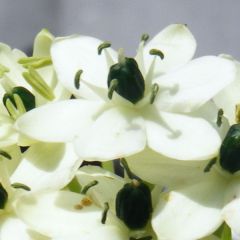
Ornithogalum arabicum
- Flowering time July, August
- Height at maturity 50 cm
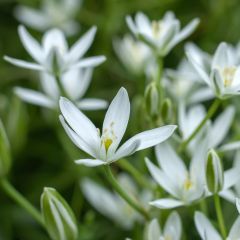
Ornithogalum umbellatum
- Flowering time May to July
- Height at maturity 30 cm
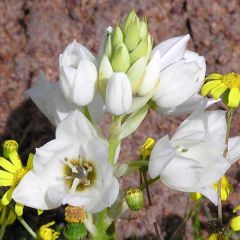
Ornithogalum thyrsoides
- Flowering time July to September
- Height at maturity 50 cm
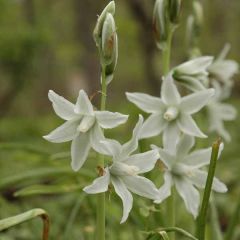
Ornithogalum nutans
- Flowering time May, June
- Height at maturity 40 cm
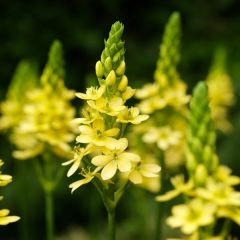
Ornithogalum Namib Sun
- Flowering time July
- Height at maturity 50 cm
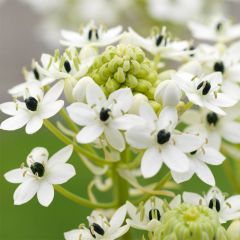
Ornithogalum saundersiae
- Flowering time March to May
- Height at maturity 80 cm
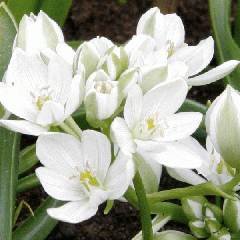
Ornithogalum balansae
- Flowering time May, June
- Height at maturity 15 cm
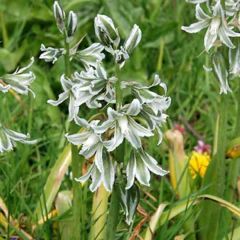
Ornithogalum narbonense
- Flowering time June to August
- Height at maturity 45 cm
Discover other Ornithogalum
View all →Available in 1 sizes
Available in 1 sizes
Available in 1 sizes
Available in 1 sizes
Available in 1 sizes
Available in 1 sizes
Planting
Where to plant?
Plant ornithogales in full sun or partial shade. We recommend finding a location where they can enjoy midday sun: they need good light for their flowers to thrive! Avoid scorching sun as well as overly dense shade.
It is important that the soil is well-draining. Like many bulbous plants, ornithogales do not like excessive moisture, especially in autumn and winter, as this could cause the bulbs to rot. A good, fairly ordinary garden soil is suitable for them. If your soil is too heavy, you can add gravel or plant on a mound to allow water to drain away. Ornithogalum umbellatum grows well in soils low in organic matter.
For the more tender ornithogales (Ornithogalum thyrsoides, Ornithogalum arabicum, Ornithogalum dubium…), you can plant them in pots as this will allow you to easily bring the plant indoors in autumn to protect it from the cold.
When to plant?
Install ornithogales (especially those with spring flowering, such as Ornithogalum umbellatum), preferably in autumn, in September or October. However, the more tender ones (Ornithogalum thyrsoides…), which generally flower in summer, are best planted in spring (April – May).
How to plant?
For a more visually appealing effect, we suggest planting them in groups of at least five bulbs. Maintain a distance of about 10 cm, or more, between the bulbs.
- Work the soil to loosen it, and add draining materials if necessary: coarse sand, gravel…
- Dig a hole and place the bulb in the correct orientation: the point facing upwards. It should be planted about ten centimetres deep.
- Cover with soil and lightly firm down.
- Water.
You can also place ornithogales in a pot, for example on a terrace.
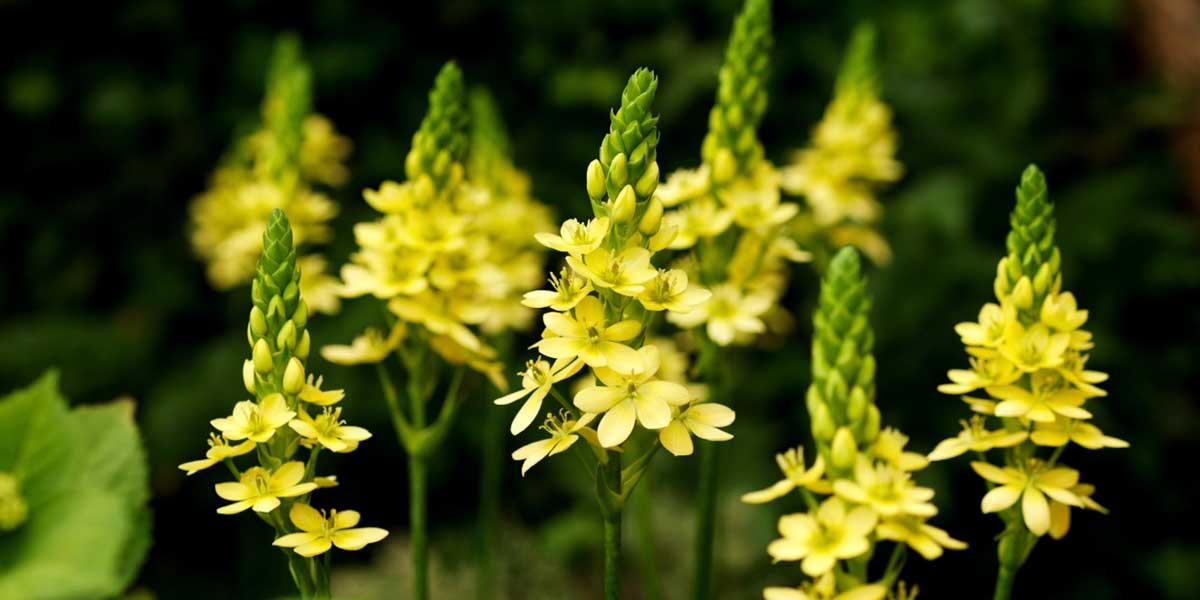
Ornithogalum ‘Namib Sun’ (photo J.M. van Berkel)
Care
Overall, if ornithogales are planted in suitable soil, they really require little maintenance. Species native to South Africa, which are less suited to our climate, need a bit more attention than European species, such as Ornithogalum umbellatum. The latter can naturalise and persist in the garden without needing much care.
Ornithogales appreciate cool soil in spring, during the growth and flowering period (until summer, depending on the varieties). Do not hesitate to water them, especially if they are grown in pots, while allowing the substrate to dry out between waterings. After flowering, the foliage wilts and the bulb replenishes its reserves. Stop watering at this point. Thus, until the end of winter, it is important to avoid excess moisture; otherwise, the bulbs may rot.
In pots, you can provide fertiliser during the growth period, then stop after flowering when the foliage turns yellow.
During flowering, feel free to pick a few flowers to make bouquets!
It is always best to cut the flowers when they are faded. In addition to encouraging the plant to produce new ones, this will prevent it from self-seeding, as some species tend to become invasive.
Once flowering is finished, the bulb replenishes its reserves, and the leaves begin to yellow. When they are completely dry, you can cut them (not before!). The plant enters dormancy, only to reappear in spring. We recommend marking the location of the bulb with a small stake or label, so as not to damage it if you need to work on the bed.
You can mulch to limit the growth of weeds and to keep the soil cool for longer.
Summer-flowering ornithogales are generally a bit more tender (Ornithogalum arabicum, Ornithogalum thyrsoides…). We suggest bringing them under cover in autumn to protect them from the cold. If they are in the ground, remove the bulbs from the soil, then store them in a dry, airy place. If they are in pots, simply bring the pot inside, and take it out again in spring. If you live in a region with a mild climate, a thick layer of mulch may suffice.
Ornithogales are not particularly susceptible to diseases or pests. Care should mainly be taken to avoid excess moisture, which can cause the bulbs to rot.
Propagation
Some species such as Ornithogalum umbellatum and Ornithogalum nutans tend to naturalise. They self-seed and spread spontaneously. It is quite simple to multiply star-of-Bethlehem plants by taking the bulblets.
Division of Bulblets
The bulb of star-of-Bethlehem plants produces bulblets, also known as bulbils, which can be taken to multiply the plant! We recommend dividing your star-of-Bethlehem plants approximately every four years. This will give them more space and encourage a more beautiful and generous flowering! Do this when the plant is in dormancy (the foliage should be completely faded), in summer or autumn.
- As you need to intervene during the dormancy period, we suggest placing a stake or a label beforehand to remind you of the location of the bulbs.
- Next, dig with a spade to unearth a bulb.
- Take the bulblets that have formed around the main bulb. Gently separate them.
- You can sort to keep only the best ones, removing those that appear damaged.
- Prepare the soil and replant them immediately in a new location. You can also plant in pots (in a mixture of potting soil and sand).
Association
Because of their very simple and light appearance, ornithogales are perfect for integrating into a naturalistic garden. Preferably choose Ornithogalum umbellatum, which grows wild in France. Place it alongside other plants with a very free and airy habit: columbines (Aquilegia vulgaris), ferns, grasses, epimediums, and geums…
With their upright stems and rather understated yet elegant white flowering, ornithogales are perfect for integrating into a modern and graphic garden. They will find their place within a patio or an inner courtyard in a city garden. Plant them near Alliums, horsetails, ferns, and hostas. You can create some formal lines with boxwood or trimmed yews, which will structure the garden. For lightness and to create a contrast in shape, add grasses, such as Pennisetum or Stipa pennata. Bring height by installing some climbing plants, such as virgin vines or clematis.
Ornithogales can also be integrated into a mixed border! Their white colour will soften brighter flowerings, which could otherwise become overwhelming. Plant them with daylilies, wallflowers, gladioli, irises… In another style, you can also pair their elegant flowering with plants in soft, pastel tones: soft pink, apricot, yellow, mauve, white… You will achieve a rather romantic effect.
Spring-flowering ornithogales, such as Ornithogalum umbellatum or Ornithogalum nutans, integrate well with other spring bulbs, such as muscaris, tulips, or daffodils… Also enjoy the starry flowering, in soft blue or white, of iphéions. As for summer-flowering ornithogales, you can pair them with Alliums, Eucomis, lilies, agapanthuses, or gladioli, for a very colourful bed!
Finally, ornithogales (especially species native to South Africa) can be planted in a rockery, for example with euphorbias, grasses, and saxifrages.
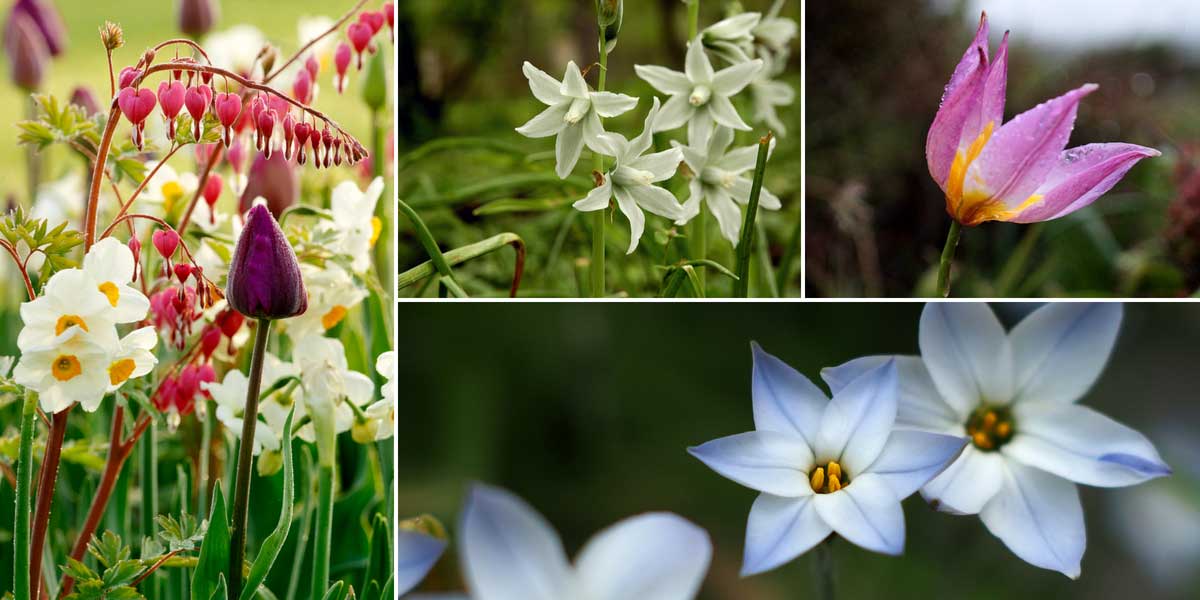
Ornithogales allow for delicate associations with a rather natural style. Bleeding hearts, daffodils, and tulips (photo Steven Bemelman – iBulb) / Ornithogalum nutans (photo Jakub_hla) / Tulipa bakeri (photo Jerzy Strzelecki) / Ipheion uniflorum (photo Takashi M.)
Did you know?
- A edible plant
The young shoots of the Pyrenean star-of-Bethlehem, Ornithogalum pyrenaicum, can be harvested and consumed, either raw or cooked, which has earned the plant its nickname of Wood Asparagus, or Asparagusette! Be careful not to confuse them with other species of star-of-Bethlehem, which can cause digestive issues or be toxic.
Ornithogalum umbellatum, on the other hand, is used as a Bach flower (flower essence).
Useful resources
- Discover our range of ornithogales!
- An article by Ingrid on our blog – Planting bulbs? 7 practical and useful tips!
- An article from the Sauvages du Poitou Blog about the Ornithogalum of the Pyrenees
Frequently asked questions
-
Is the foliage turning yellow... Is this normal?
After flowering, the star-of-Bethlehem replenishes its reserves... Then, the plant enters dormancy: its foliage wilts and turns yellow. It disappears, remaining only in the form of a bulb in the soil, to develop again in the following spring... This is its natural cycle!
-
The flowering is over, can I cut the foliage?
After flowering, the bulb still needs its leaves to carry out photosynthesis and accumulate nutrient reserves that will allow it to get through the bad season. Wait until the foliage has turned completely yellow before cutting it!
- Subscribe!
- Contents
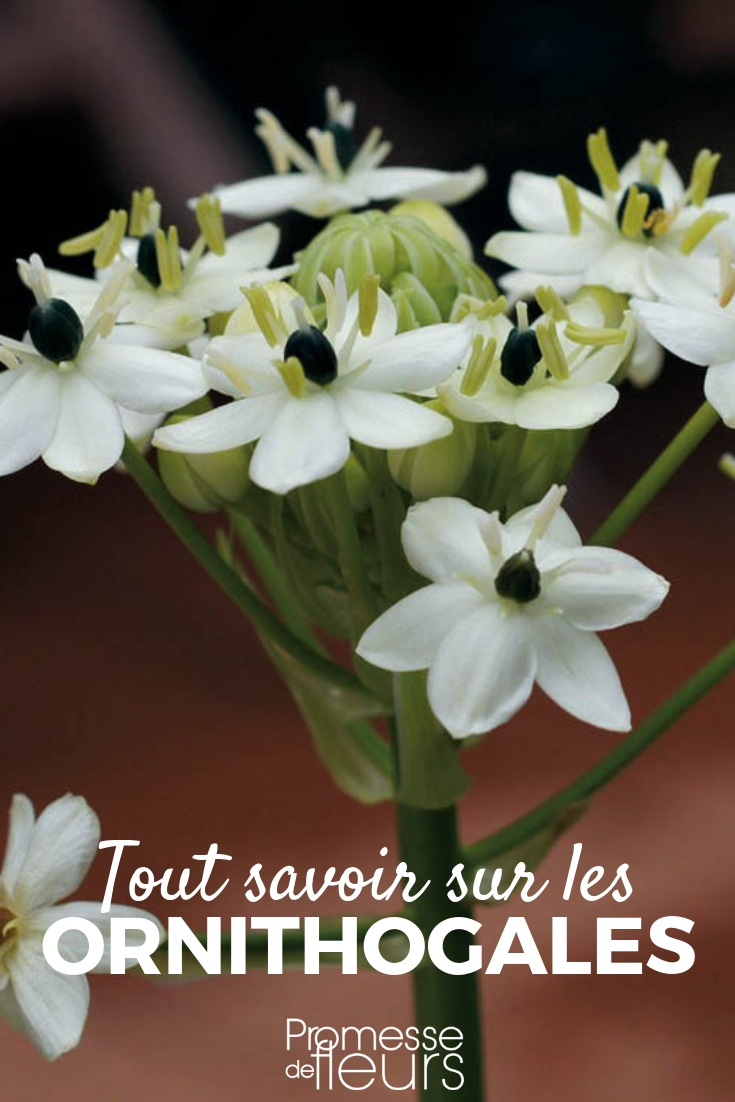



































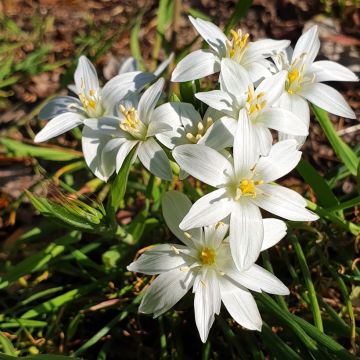

Comments